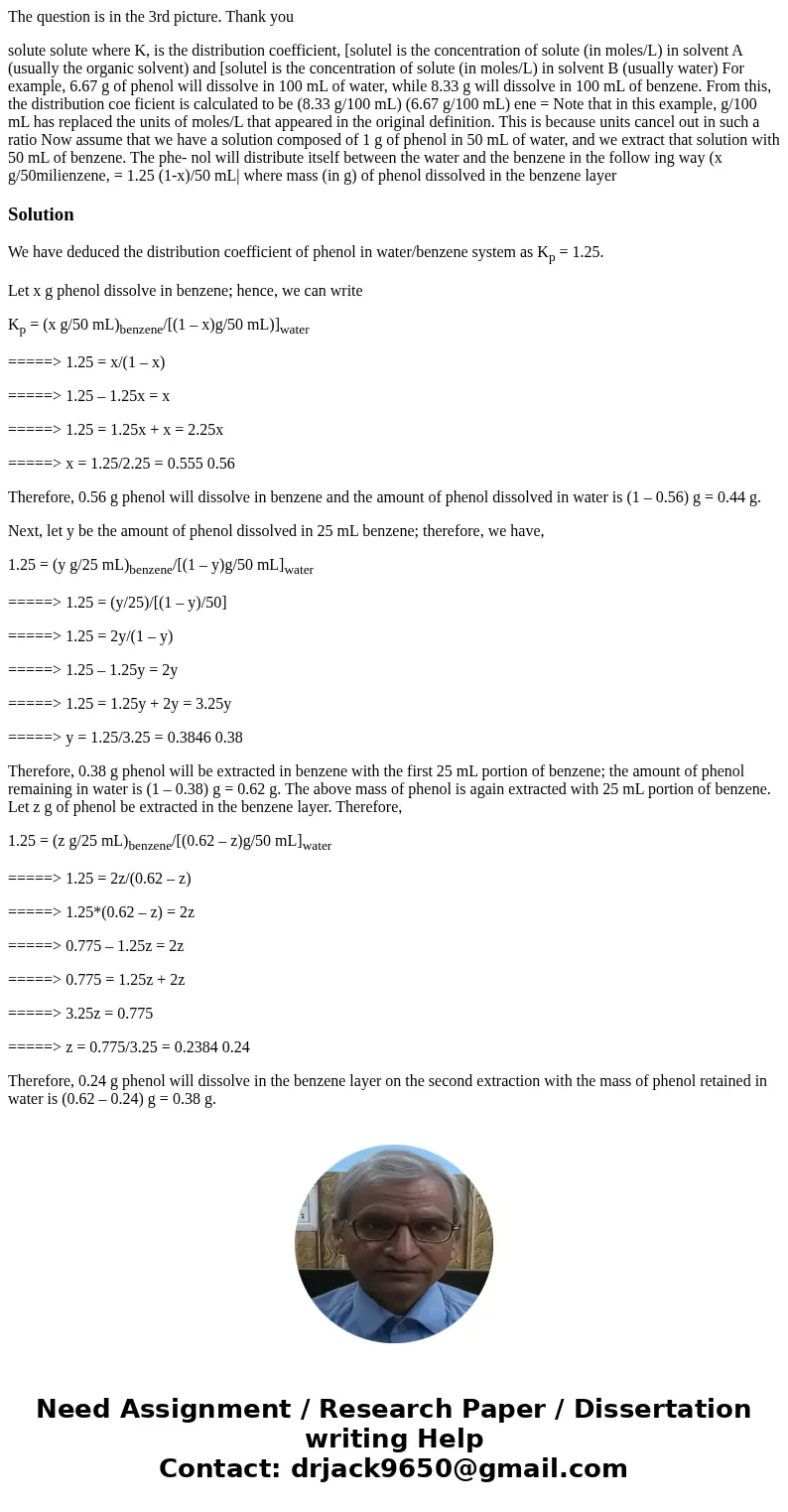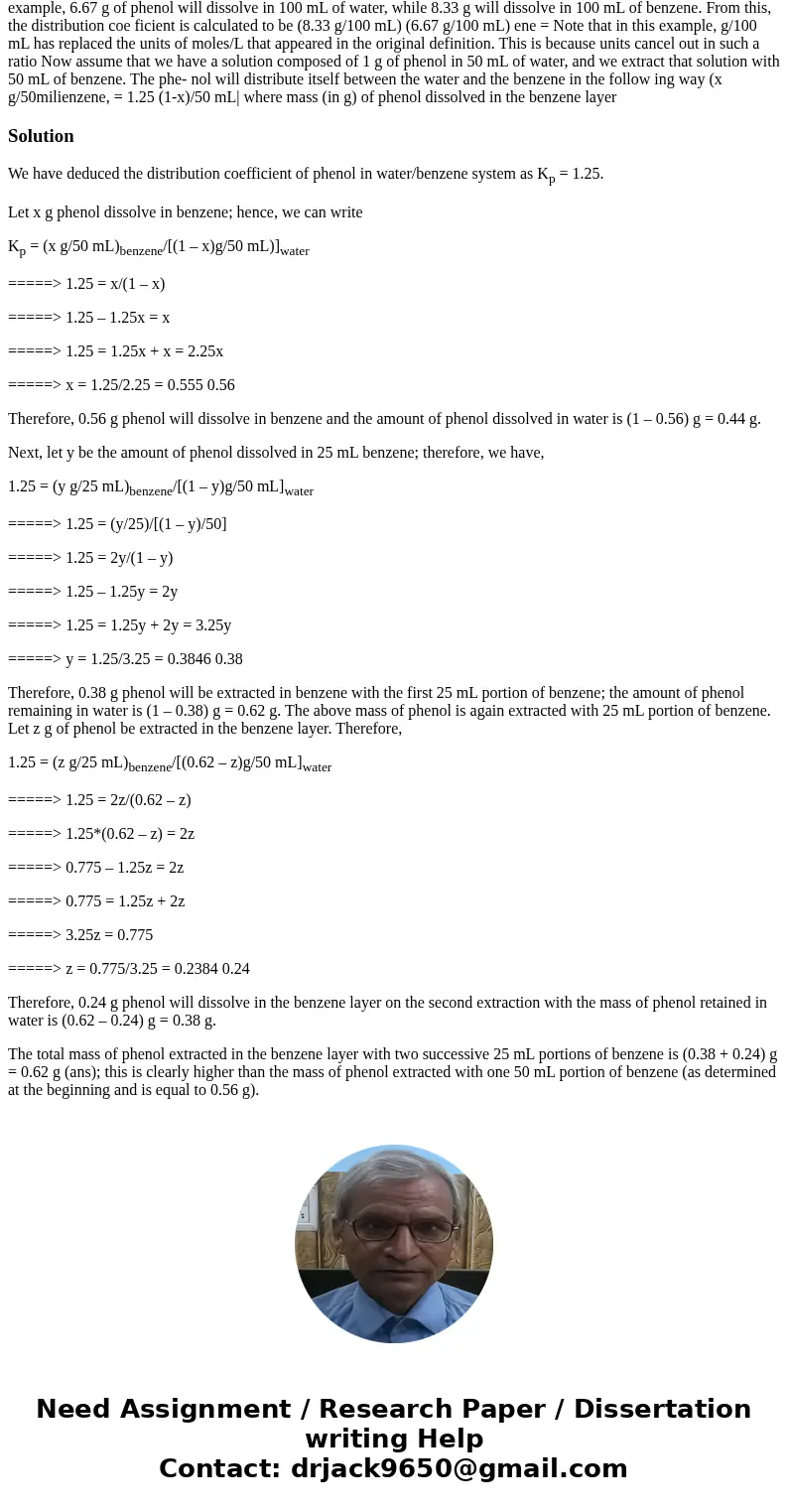The question is in the 3rd picture Thank you solute solute w
The question is in the 3rd picture. Thank you
solute solute where K, is the distribution coefficient, [solutel is the concentration of solute (in moles/L) in solvent A (usually the organic solvent) and [solutel is the concentration of solute (in moles/L) in solvent B (usually water) For example, 6.67 g of phenol will dissolve in 100 mL of water, while 8.33 g will dissolve in 100 mL of benzene. From this, the distribution coe ficient is calculated to be (8.33 g/100 mL) (6.67 g/100 mL) ene = Note that in this example, g/100 mL has replaced the units of moles/L that appeared in the original definition. This is because units cancel out in such a ratio Now assume that we have a solution composed of 1 g of phenol in 50 mL of water, and we extract that solution with 50 mL of benzene. The phe- nol will distribute itself between the water and the benzene in the follow ing way (x g/50milienzene, = 1.25 (1-x)/50 mL| where mass (in g) of phenol dissolved in the benzene layerSolution
We have deduced the distribution coefficient of phenol in water/benzene system as Kp = 1.25.
Let x g phenol dissolve in benzene; hence, we can write
Kp = (x g/50 mL)benzene/[(1 – x)g/50 mL)]water
=====> 1.25 = x/(1 – x)
=====> 1.25 – 1.25x = x
=====> 1.25 = 1.25x + x = 2.25x
=====> x = 1.25/2.25 = 0.555 0.56
Therefore, 0.56 g phenol will dissolve in benzene and the amount of phenol dissolved in water is (1 – 0.56) g = 0.44 g.
Next, let y be the amount of phenol dissolved in 25 mL benzene; therefore, we have,
1.25 = (y g/25 mL)benzene/[(1 – y)g/50 mL]water
=====> 1.25 = (y/25)/[(1 – y)/50]
=====> 1.25 = 2y/(1 – y)
=====> 1.25 – 1.25y = 2y
=====> 1.25 = 1.25y + 2y = 3.25y
=====> y = 1.25/3.25 = 0.3846 0.38
Therefore, 0.38 g phenol will be extracted in benzene with the first 25 mL portion of benzene; the amount of phenol remaining in water is (1 – 0.38) g = 0.62 g. The above mass of phenol is again extracted with 25 mL portion of benzene. Let z g of phenol be extracted in the benzene layer. Therefore,
1.25 = (z g/25 mL)benzene/[(0.62 – z)g/50 mL]water
=====> 1.25 = 2z/(0.62 – z)
=====> 1.25*(0.62 – z) = 2z
=====> 0.775 – 1.25z = 2z
=====> 0.775 = 1.25z + 2z
=====> 3.25z = 0.775
=====> z = 0.775/3.25 = 0.2384 0.24
Therefore, 0.24 g phenol will dissolve in the benzene layer on the second extraction with the mass of phenol retained in water is (0.62 – 0.24) g = 0.38 g.
The total mass of phenol extracted in the benzene layer with two successive 25 mL portions of benzene is (0.38 + 0.24) g = 0.62 g (ans); this is clearly higher than the mass of phenol extracted with one 50 mL portion of benzene (as determined at the beginning and is equal to 0.56 g).


 Homework Sourse
Homework Sourse